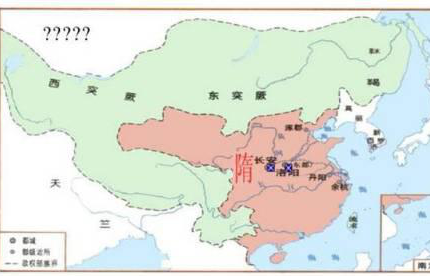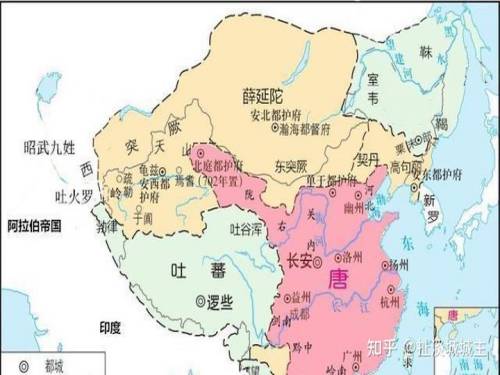Concise History of China Chapter 1 Tang Dynasty 唐朝
2021/04/29
To help students learn Chinese better, this website will gradually introduce articles on the process of Chinese history, so that students in the understanding of Chinese history, learning Chinese, twice the result with half the effort. The article will be introduced from the beginning of the dynasty, the main characters and the major events to promote the historical process, the military, economic, scientific and technological level at that time, the status in the world, the reasons for the decline of the dynasty and so on. Only by understanding the history of China, understanding that China has only lagged behind the world for political reasons in the past 100 years, and is now moving towards a comprehensive rejuvenation. It is the trend of historical trends that can not be stopped by sleeping lions. Understand these history and present, learn Chinese well and let students know the importance of learning Chinese and future prospects.
Chapter 1 Tang Dynasty
In order to link up with the past, we first briefly understand the rise and fall of the previous dynasty. The Sui Dynasty was a unified dynasty in Chinese history.
Sui Dynasty founding emperor Sui Wendi Yang Jian, after 581 AD, the country is "Sui ", was in Xi'an, Shaanxi Province as Sui Dynasty capital.
In 589 AD, the Sui army destroyed the last Chen Dynasty of last Southern Dynasty, unified China, and ended the division of nearly 300 years since the end of the Western Jin Dynasty. Sui Wendi worked hard to manage, creating a prosperous situation in the history of China.

In 604 AD, Sui Wendi Yang Jian's second son, Sui Yang Di Yang Guang, moved to Luoyang, Henan Province.
During the reign of Emperor Yang of the Sui Dynasty, the famous Grand Canal of China, the Grand Canal of the Sui and Tang dynasties, was the longest canal in the history of China and world.

In the Sui Dynasty, a local chronicle of the Western Regions, which mainly records the geographical data of the countries of the Western Regions, was compiled.
Because of the construction of the Grand Canal, which runs through the north and south, the internal and external measures consumed the national strength too much, which led to the rebellion of the people and the aristocracy in the late Sui Dynasty. By AD 619, by the rebel aristocrat Li Yuan led by the army overthrown and perished.

Li Yuan is the great cousin of Emperor Yang of Sui Dynasty.
The Tang Dynasty began in 618 AD and built its capital in Xi'an, Shaanxi Province. It experienced four periods the prosperous Tang Dynasty, the middle Tang Dynasty, the late Tang Dynasty four periods, the time span 300 years. It is one of the longest dynasty in Chinese history.
In the early Tang Dynasty, Li Shimin, the second son of Li Yuan, won the battle with Big Brother and became Tang Taizu.
Tang Taizu Li Shimin, following his father to rebel against Emperor Yang of the Sui Dynasty, the southern expedition to the north, in 626 AD, Tang Gaozu Li Yuan to Tang Taizong Li Shimin, the Tang Dynasty into a strong national strength, social stability, cultural prosperity, sound far spread of the Eastern power, history called "the rule of Zhenguan ". Li Shimin was not only a famous statesman, strategist, but also a calligrapher and poet.
The Zhenguan period of Li Shimin's rule was the peak of military, political and diplomatic in Tang Dynasty. There is no doubt about military capabilities, warlords were eliminated, the surrounding small countries are subject to. A number of famous generals emerged, such as Li Jing, Li Ji, Hou Junji, Su Dingfang and Chai Shao, and so on. And has the best cavalry unit Xuanjia army, in the Chinese military history and the military history of world, is the cold weapon era heavy color.
During the period of Li Shimin's rule, national politics was clear, and Li Shimin, as a monarch, took the initiative to delegate power to the prime minister. The monarchy and the power of the prime minister achieved mutual restraint, reduced a lot of decision-making mistakes, and the feudal society at home. Such openness and progress are precious.
In terms of diplomacy, the four Yi guests, all countries came to the dynasty, according to the emperor of the Tang Dynasty as "Tianke Khan ", countries are willing to serve the Tang Dynasty, think that the Tang Dynasty to fight for glory, competing to become the country of the Tang Dynasty. At that time, the Japanese sent special envoys, risking their lives to the Tang Dynasty, worship the emperor of the Tang Dynasty, learn the advanced culture of the Tang Dynasty, and bring back to Japan from generation to generation.
In this period, China established the dominant position in the East Asian cultural circle.
At that time, the capital Changan (Xi'an, Shaanxi Province) became the largest city in the world, with a population of 1 million at its peak, only 300000 in Constantinople, and a steady stream of businessmen from all over the streets of Chang' an City. Quite the style of an international metropolis.
In the Tang Dynasty, Sun Simiao, king of medicine, wrote "Qianjin Fang ", invented gunpowder, engraving printing, and Tang Dao, the world's strongest steelmaking at that time. The Great Yan Calendar, edited by a group of outstanding astronomers and monks in the Tang Dynasty, established an unequal interpolation formula to measure the meridian.
At that time, the level of military, economy and science and technology in the Tang Dynasty was at a world-class level.
In 904 AD, the late Tang Dynasty emperor Li Jian was finally forced to abdicate, ending the Tang Dynasty.
Any dynasty has a rise and fall process, when a dynasty into the end of the political economy and various reasons, so that she went to decline. But it will be replaced by another new dynasty. In the late Tang Dynasty, because of the central government and local aristocrats, and did not adapt to the development of historical trends, sharp irreconcilable contradictions occurred. Made the beginning of a new dynasty. Next we will enter the Song Dynasty, please see the next chapter.
Through this Chinese history, we can know how Chinese characters and Chinese languages gradually spread to Korea and Japan, and Chinese characters enter their language series.
Edited by Baoyang from Shanghai Beihaimandarin





